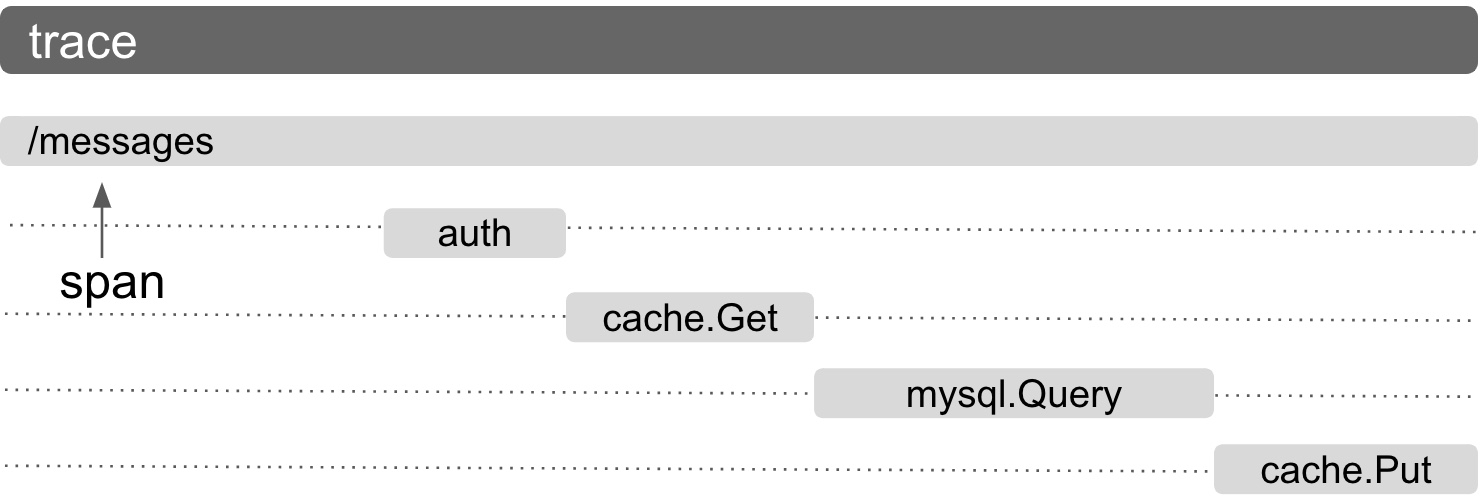Span
Span
A span represents a single operation in a trace. A span could be representative of an HTTP request, a remote procedure call (RPC), a database query, or even the path that a code takes in user code, etc.
For example:

Above, you can see a trace with various spans. In order to respond
to /messages, several other internal requests are made. Firstly,
we check if the user is authenticated. Next we check if their
messages were cached. Since their message wasn’t cached, that’s
a cache miss and we then fetch their content from MySQL, cache it
and then provide the response containing their messages.
A span may or may not have a parent span:
- A span without a parent is called a “root span” for example, span “/messages”
- A span with a parent is called a “child span” for example, spans “auth”, “cache.Get”, “mysql.Query”, “cache.Put”
Spans are identified by a SpanID and each span belongs to a single trace. Each trace is uniquely identified by a TraceID which all constituent spans will share.
These identifiers and options byte together are called Span Context. Inside the same process, Span context is propagated in a context object. When crossing process boundaries, it is serialized into protocol headers. The receiving end can read the Span context and create child spans.
A span consists of the following fields:
- Name
- SpanID
- TraceID
- ParentSpanID
- StartTime/EndTime
- Status
- Time events
- Link
- SpanKind
- TraceOptions
- Tracestate
References
| Resource | URL |
|---|---|
| Span specs | specs/Tracing/Span |
| Span proto definition | proto/trace/v1/Span.proto |
